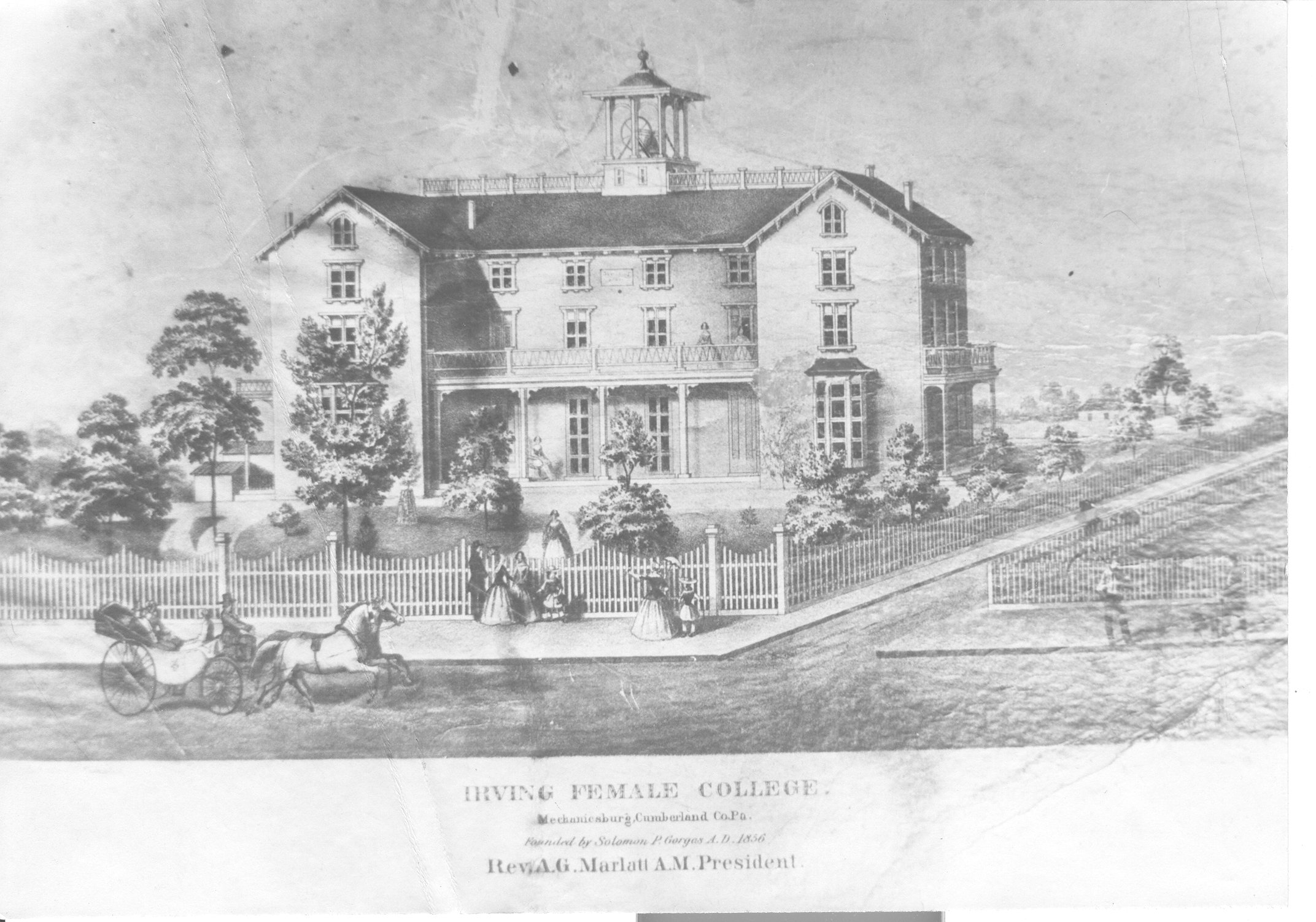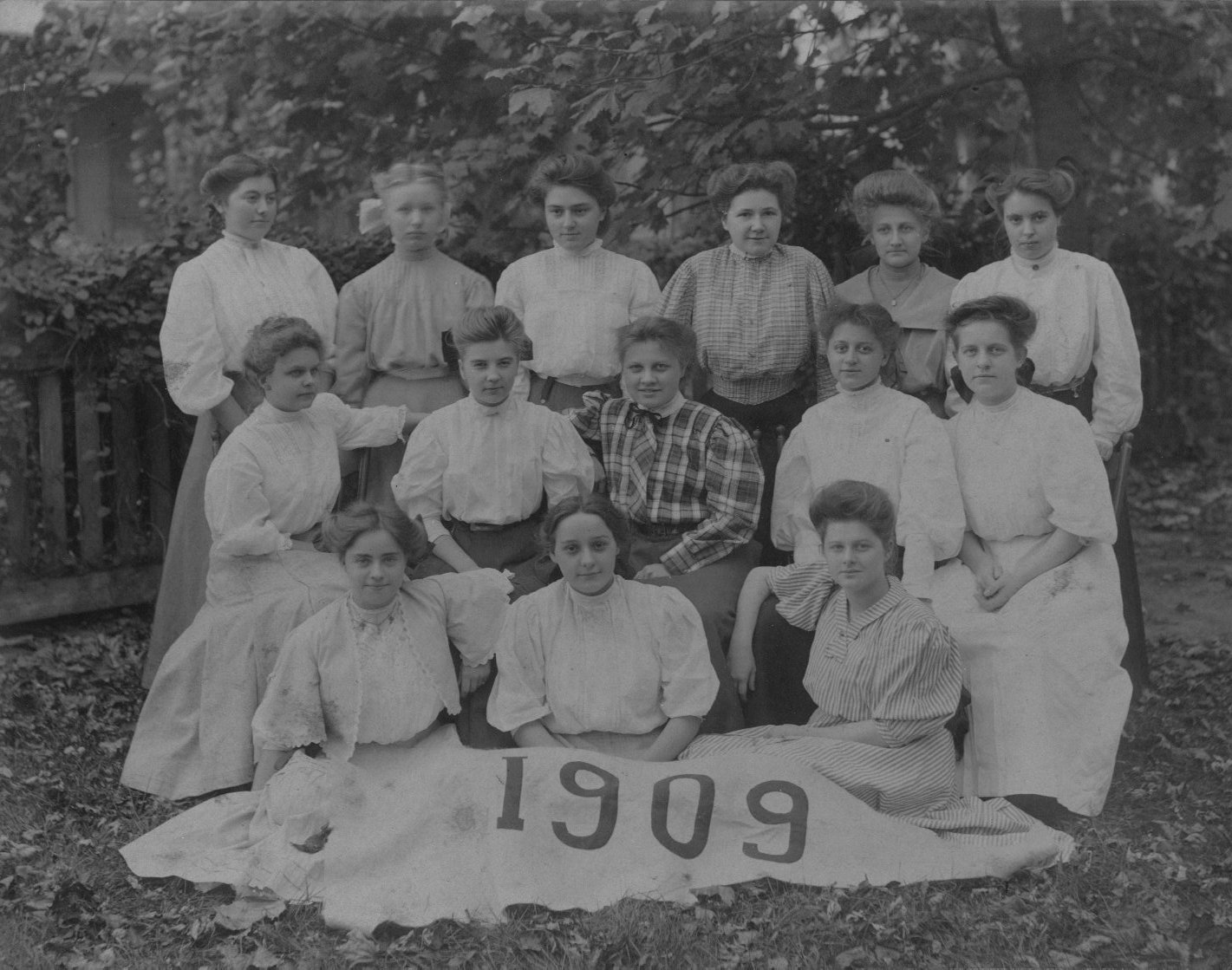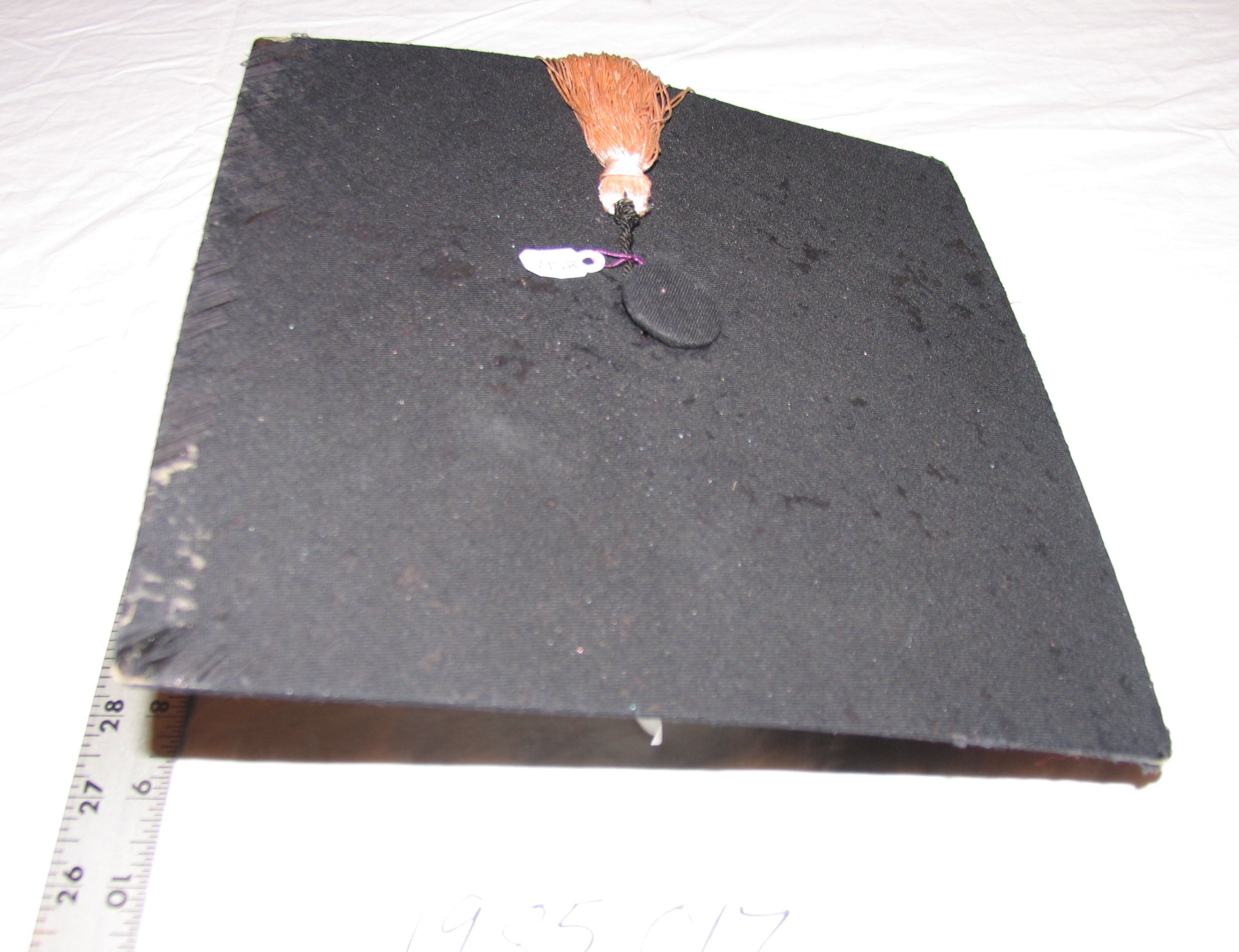Ira Shuey Eberly II – Businessman, Banker
Born on October 3, 1908, to Guy and Ada Brandt Eberly in Mechanicsburg, Pennsylvania, Ira Shuey Eberly II grew up around the family lumber business.



Top: Mechanicsburg Irving Female College (37G-12-01);
Middle: Group photograph of class at Irving College in Mechanicsburg, 1909 (01B-A-04);
Bottom: Mortorboard worn at graduation at Irving College, Mechanicsburg. Pink tassel (1985.017.01).
In 1856, Solomon Gorgas, a successful businessman, state legislator, and influential resident of Mechanicsburg donated land for an institution for the education of women. The founding group named the school "Irving Female College," for the immensely popular American author Washington Irving.[1] The name changed over time, becoming Irving College for Young Ladies, then Irving College for Young Women, and finally, in 1895, Irving College and Music Conservatory.[2]
The mission of the college was well stated in 1859, by the Rev. Conway Wing of Carlisle. His address to the first graduating class was based on Psalm 114:12: “That our sons may be as plants grown up in their youth: that our daughters may be as corner stones polished after the similitude of a palace.”[3] The school adopted the latter half of this quotation for the official motto. The school had a good start, but faltered in the decade following the Civil War, closing for three years from 1883-1886. Edmond Ernest Campbell, known as E. E. took over the school’s presidency in 1891 from Mary Kessler and purchased the college from several board members in 1898. Under Campbell, the school became successful and expanded three times between 1892 and 1902, with a steady enrollment of about 90-100 students, including many commuting students.[4] For assorted reasons, the "young ladies academy" model of educational institutions lost supporters, and the college closed its doors in 1929 after a gradual decline during the 1920s.
Two Irving College buildings still exist in Mechanicsburg; they are Irving Hall and Columbian Hall, and both were converted to apartments in the late 1930s. "Argyle," the former home of the college president, was demolished in 1991 for an expansion of Seidle Hospital.[5] In 1983, the Irving College buildings were listed on the National Register of Historic Places.[6] Irving Hall was the location of "the classroom, the parlor, library, and the college offices,” and could also house up to 40 students. The building “…combined all the modern improvements for the promotion of health, comfort, and convenience.” [7] Growth of the college created a need for a second building by the end of the 19th century.
Columbian Hall, the new building, "contained 40 additional dormitory rooms on the upper floors and a large auditorium on the first floor.” In 1901, an expanded wing was added to the eastern wing of Irving Hall, creating rooms for music, a kitchen, a cafeteria, and a gymnasium. Ten years later, a substantial President’s mansion was constructed on campus, near the corner of Simpson and Filbert Streets. Built in the Spanish Renaissance style, the mansion was deemed as a proper home to “…entertain the faculty and students and his friends.” The campus also grew by four acres, and was, by that time, landscaped with over 150 ornamental trees. A cluster of the original trees still grows on the front lawn of the campus.[8]
"Irving Girls" were proud of their school. Statistics for 1880 indicate that only two percent of women aged 18 to 21 attended college at that time.[9] Irving seems to have created a singular format that was partly finishing school and partly academic institution. Beginning in 1895, the students published their own literary journal: The Sketch Book, and in 1901 they began to offer a yearbook. Many of the graduates went into teaching after graduation. The college was not immune to the economic pressures of the 1920s and 1930s, and Lilly Grace and the First Bank and Trust of Mechanicsburg, as executors of the estate of Dr. E. E. Campbell, closed the school in the summer of 1929 surprising many students and even some staff.[10] Alumnae were unable to raise funds to reopen the school.[11] Both buildings were eventually sold by 1937.[12]
Today, the Mechanicsburg Public Library, known as the Simpson Library, houses a collection of Irving alumnae memorabilia. With funds from a grant given in the early 1990s, the collection was studied, cataloged, and enhanced with the addition of a series of oral histories made by former students.[13] There is an area of the library dedicated to Irving materials for interested patrons and scholars. One scholar who has studied Irving College's history states: "4,200 women attended for five years or one class. It meant opportunity, education, personal freedom, a strict home away from home, and a chance to develop the underprivileged minds of women."[14]
Born on October 3, 1908, to Guy and Ada Brandt Eberly in Mechanicsburg, Pennsylvania, Ira Shuey Eberly II grew up around the family lumber business.
[1 Biographical Annals of Cumberland County, Pennsylvania, (Chicago: The Genealogical Publishing Co., 1905,) 33.
[2] John Maietta. "Opportunity or Ornament: The Promise of Women's Education at Irving College, 1890-1910," Cumberland County History, Vol. 31, (2014), 1.
[3] Ibid., 4.
[4] Ibid.,1.
[5] Reppert, Byron L., Mechanicsburg, Arcadia Publishing, 2010, 80.
[6] Rose, Sarah, “Irving Female College National Register of Historic Places nomination form,” 1982. On file at the Pennsylvania Historic Preservation Office.
[7] Dave Maher. Spotlight Series: National Register – The Irving Female College, Pennsylvania Historic Preservation: Blog of the Pennsylvania Historic Preservation Office, March 20, 2013. Accessed on May 30, 2014 at http://pahistoricpreservation.com/spotlight-series-national-register-the....
[8] Ibid.
[9] Barbara Miller Solomon, In the Company of Educated Women: A History of Women and Higher Education in America (New Haven: Yale University Press, 1985), 20.
[10] Chad A. Leinaweaver, “Irving College: Its Life, Its Study, Its Women” (master’s thesis, Northeastern University, 1998), 84 and 85.
[11] Leinaweaver, 88.
[12] Maher.
[13] Sara J. Henneberger. Paging Through Our Past: The History of the Joseph T. Simpson Public Library of Mechanicsburg, Pennsylvania, 50th Anniversary edition, January 2011, 13.
[14] Leinaweaver 34.